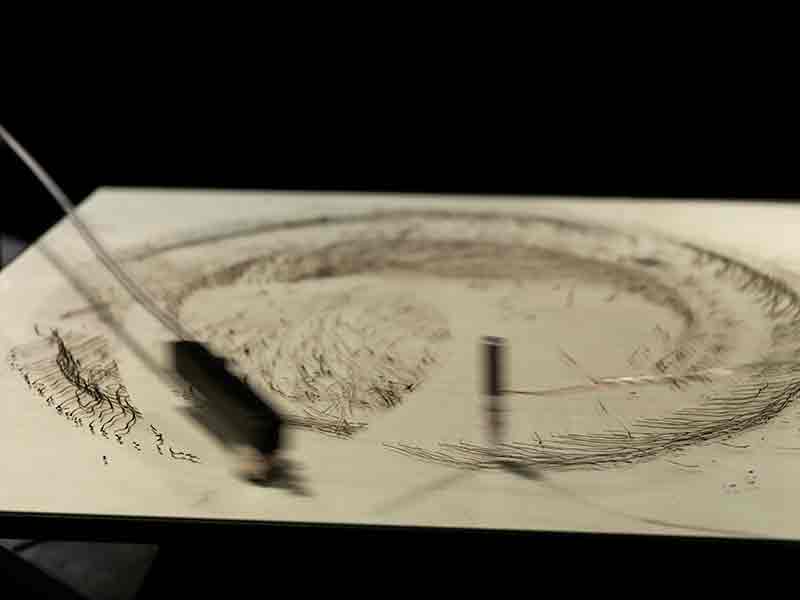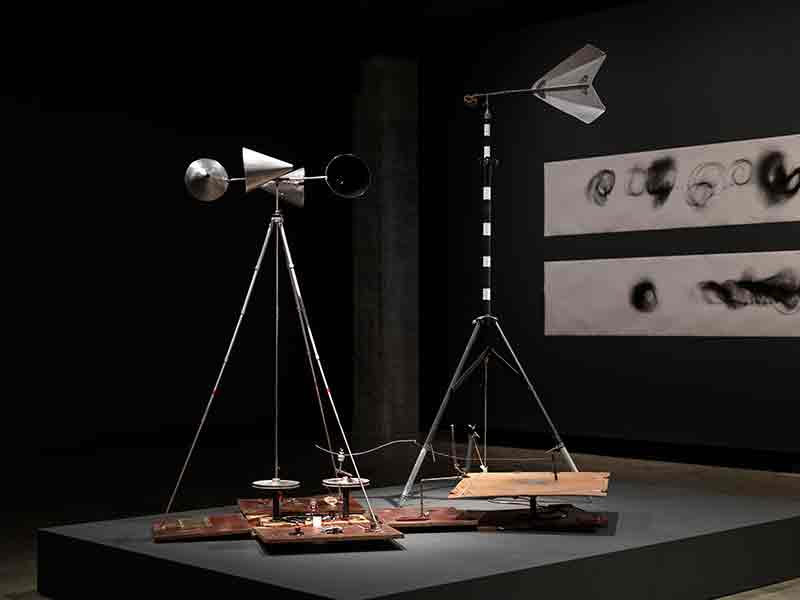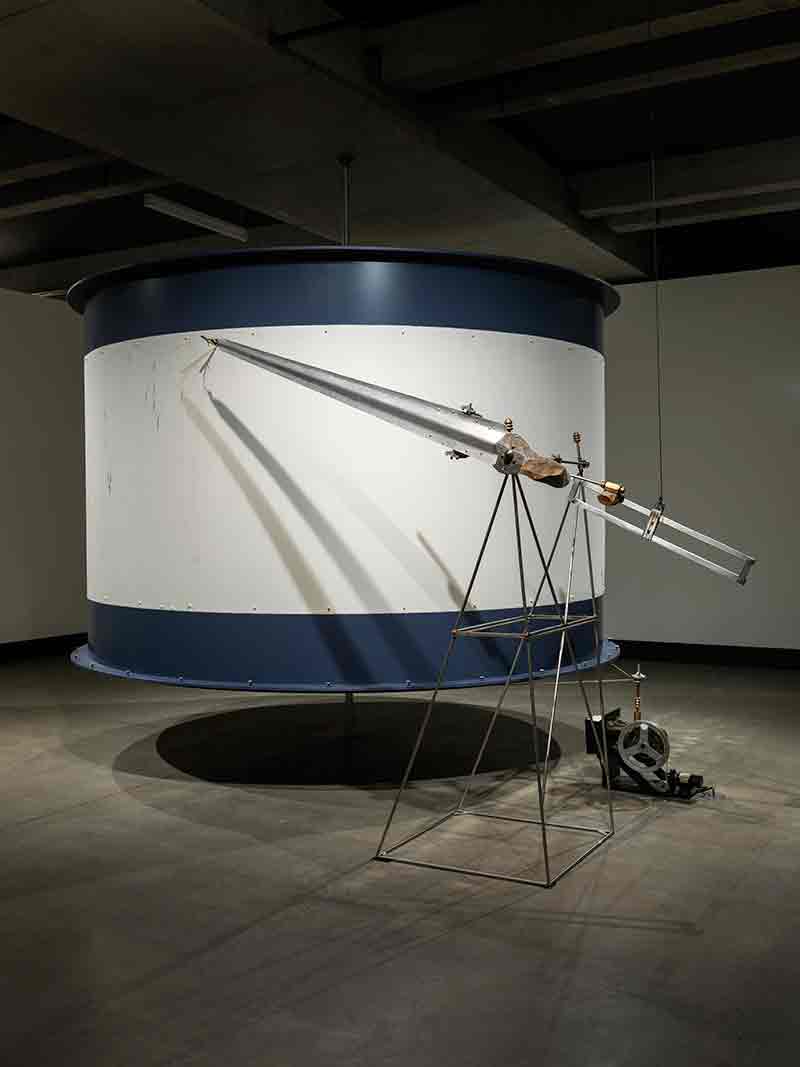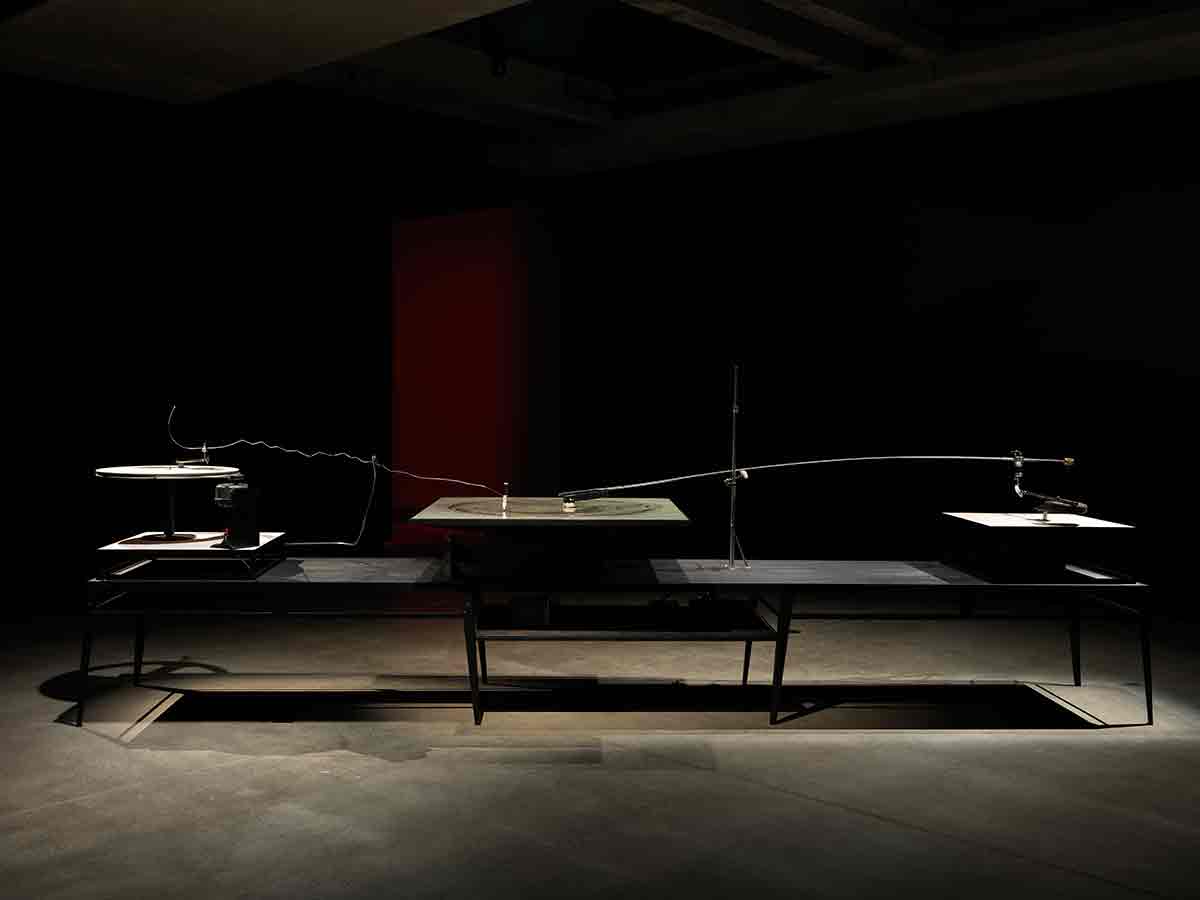
MONA’s larger-scale shows have been a sequence of blockbuster style exhibitions of high-end artworld names: Marina Abramović, Matthew Barney, Gilbert & George. These are the rock stars of the art world; artists with global profiles. There’s undoubtedly a strategy at work here to establish MONA as a significant museum, capable of mounting shows at the scale artists of this calibre require. Cameron Robbins isn’t a rock star, so giving him similar treatment to Barney and Abramović is an evolutionary step for MONA. This is the moment where MONA does more than take part in a global touring circuit, instead launching an artist into it.
Who knows what kind of decision-making led to that artist being Cameron Robbins, but this collision of circumstance and strategy is, of course, gambling. Still, gambling is what MONA was built on and is one of the museum’s greatest strengths; and if it is not too much of a metaphorical strain, Robbins is what a gambler might see as a very good risk. Field Lines sees him extending his practice in a successful and inspiring manner. The result is a fresh, exuberant survey of an artist who is working very hard.
Robbins has never had a showing of his work at this scale before. But he’s no emerging artist. His practice is well-established and the various areas of investigation defined and clear. Robbins is engaging with natural forces. His earliest works, the portable wind-driven drawing machines, have a fey, curious quality and no matter where his work spreads to in its holistic and outwardly circular progression, this sense of tinkering exploration by an enthused scientific outsider never leaves.

There is, of course, more to Robbins than this. His work is slippery and harder to contain than it first appears. Merely labelling him a tinkering toymaker is to miss the temporal aspect of the work. Time is an important ingredient of the beautiful commission work Tide Line. One of the standout moments of the entire show, it incorporates a complex mechanical design that links a pen slowly drawing on a vast revolving drum to a buoy floating outside MONA.
This intricate mechanism records the water movement in Berridale Bay, working slowly in real time. Tide Line pronounces a notion of temporal measurement that runs through Robbins’s work: just as much as he is recording the elemental movement of natural forces, he is also describing passages of time. This locates his work in a more complex sensibility, where the vastness of geological time is hinted at; suddenly the presence of carefully selected rocks used as counterweights in the works takes on another layer of meaning; they are relics of time passing, just as the generated drawings are.

Locked in an unending duel, the two mechanisms that make up Solar Loggerheads expand the scope of Robbins’ enquiry further. A solar-powered machine, holding a felt tip marker, randomly sketches chaotic lines upon a flat sphere. The opponent device swipes an eraser about the surface, aggressively erasing the frantic lines.
The stalemate of opposition and the futility of conflict itself is represented by this rich work. A tussle between renewable energy and non-renewable, a toxic domestic relationship of compulsive and damaging repetition all folded into the duelling machines. Their movement is engrossing to any viewer, as are the ideas that are incited: the art reaches past any confines and is capable of being almost inexhaustibly interpreted without becoming vacuous.
The power of Solar Loggerheads is it’s fluid nature. It will not be confined, and neither will any of Robbins’ art. Robbins is staring in wonder at natural forces outside of himself. He opts to collaborate rather than control, allowing the wind and the tide to do what they do, be what they are, without chaining them to metaphor.


